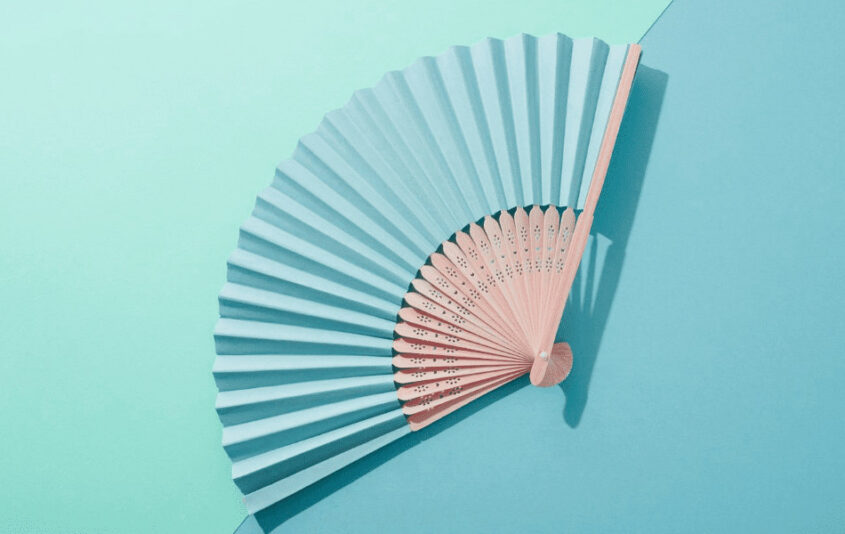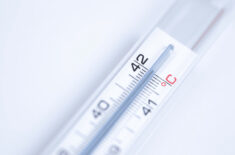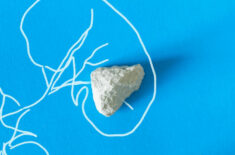Overview
Menopause is a rite of passage in the life of a woman.
It’s marked by the end of the menstrual cycle and reproductive years.
Medically, postmenopausal women experience no period for 12 consecutive months.
Most women experience it after the age of 45 though that can significantly vary.
Perimenopause refers to the time leading up to menopause and usually happens in a women’s ’40s.
Menopause occurs because of a decline in hormone levels thanks to the ovaries, which gradually stop producing estrogen and progesterone.
The reduction in estrogen levels causes menopausal symptoms such as mood swings, weight gain, hot flashes, night sweats, vaginal dryness, sleep troubles, and decreased sexual desire.
Menopausal women may also experience high blood pressure and palpitations.
There are medications to reduce the severity of symptoms like hot flashes, and in some instances, hormone replacement therapy may also be used.
It’s worth noting, though, that some research indicates hormone replacements may increase the risk of breast cancer. (1)
You can also use natural lubricants like coconut oil to moisten vaginal tissue.
It’s essential to nurture yourself during this transitional phase and adopt empowering habits that can help keep stress levels down:
- Hydrate and drink at least 2L of water daily. (Pro tip: Add 1-2 drops of supplement grade, organic lemon, grapefruit, or peppermint essential oils to your water for added support.)
- Eat a clean, energy-giving diet. (Pro tip: Did you know you can use essential oils for cooking?)
- Use essential oils to relieve stress and increase feelings of relaxation.
- Rest well when you can. (Aim for 7-8 hours sleep each night).
- Move your body mindfully.
- Practice breathing exercises daily.
- Meditate daily.
You can also practice the following for hormonal balance:
- Avoid conventional meat products as these tend to be injected with hormones and antibiotics.
- Reduce or avoid alcohol, especially high-sugar options like wine. This can impact hormone levels and can mess with your mood and sleep quality.
- Reduce or avoid sugar and processed foods.
- Reduce or avoid dairy products as these can also impact hormones.
- Avoid gluten as it can negatively affect mood, gut health, and vitality.
Essential Oils As A Natural Remedy
Essential oils can be a useful tool to have in your arsenal when menopause symptoms arise.
They’re highly concentrated plant essences with many healing and medicinal properties known to help alleviate symptoms like:
- Sleep troubles
- Hot flashes
- Depression & moodiness
- Balance hormones
- Weight gain
- Aging skin
The Best Essential Oils for Menopause
Many essential oils possess anti-inflammatory properties, and some may act as phytoestrogens, plant compounds that imitate estrogen function.
A 2008 controlled clinical trial published in the Evidence-Based Complementary and Alternative Medicine Journal found that: (2)
- Phytoestrogen essential oils include clary sage, coriander, angelica, cypress, and fennel oil.
- Essential oils can help improve psychological symptoms like anxiety, mood swings, and depression in middle-aged women. (3)
- Geranium oil helps balance hormones. (4)
- Rose oil can strengthen the uterus. (4)
- Evening primrose can be used as a carrier oil for menopausal women. (5)
- Regular aromatherapy massage may be an effective treatment for hot flashes, pain, and depression.
According to Valerie Ann Wordwood, world-renowned aromatherapist and author of “The Complete Book of Essential Oils and Aromatherapy,” the following oils can be helpful for specific symptoms: (6)
Hot flashes:
- Clary sage oil
- Geranium oil
- Peppermint oil
- Roman chamomile oil
Fluid retention:
- Juniper berry oil
- Cedarwood oil
- Rosemary oil
- Lemon oil
Fatigue:
- Grapefruit oil
- Bergamot oil
- Ylang-ylang oil
- Frankincense oil
Depression:
- Neroli oil
- Rose oil
- Roman chamomile oil
- Clary sage oil
Anxiety:
- Lavender oil
- Cardamom oil
- Peppermint oil
- Vetiver oil
Digestion:
- German chamomile oil
- Cardamom oil
- Peppermint oil
- Spearmint oil
Sleep problems:
- Valerian oil
- Lavender oil
- Roman chamomile oil
- Sweet orange
Also noteworthy is vitex agnus-castus oil or chaste berry oil.
Both the berries and leaves of this plant may help balance hormonal changes and lessen menopause symptoms. (7)
Safety Concerns
Essential oils are very potent – a little goes a long way.
You only need a few drops to reap the medicinal benefits.
When used mindfully and safely, essential oils usually offer little to no harmful side effects.
Some people might experience skin irritation, so it’s crucial always to dilute essential oils with a carrier oil. (More on that below.)
Perform a patch test on a small area and wait 24-48 hours before proceeding to larger areas.
Discontinue use immediately if you experience any adverse reaction or irritation.
Always choose certified organic, therapeutic-grade essential oils whenever possible.
This will ensure you experience the maximum healing potency of each oil.
It’ll also reduce your exposure to harmful chemicals and solvents.
How To Use EOs for Menopause
As mentioned, dilute essential oils with a carrier oil like coconut oil, jojoba oil, or sweet almond oil when applying directly to your skin.
As a general rule, you can use 2-3 drops of essential oil per 1 teaspoon of carrier oil.
You can rub the soles of your feet, back, abdomen, neck, wrists, and temples with the mixture.
Make cold compresses by simply mixing 3-4 cups of cold water in a glass or non-BPA plastic bowl and add two tablespoons witch hazel and a maximum of 24 drops of whatever oils you choose.
Fully immerse a small cloth or towel and wring thoroughly.
Apply to the forehead, lower belly, or back whenever you need it.
You can also add 12-15 drops of essential oils to 200 ml of water in your diffuser for a less direct effect.
A DIY Essential Oil Blend For Hot Flashes
- 5 drops peppermint oil
- 5 drops Roman chamomile oil
- 5 drops Geranium oil
- 5 drops Grapefruit oil
- 10 drops clary sage oil
- Distilled water
- 3 tablespoons witch hazel
- 1 dark glass or non-BPA plastic spray bottle
Place the water and witch hazel in the spray bottle and then add the essential oils.
Shake well.
Place the bottle in the fridge and keep it there until you need it.
You’re welcome 🙂
REFERENCES
:
(1) https://pubmed.ncbi.nlm.nih.gov/10659874/
(2) https://www.ncbi.nlm.nih.gov/pmc/articles/PMC2529395/#B7
(3) https://pubmed.ncbi.nlm.nih.gov/10069621/
(4) Battaglia S. The Complete Guide to Aromatherapy. Queensland: The Perfect Portion; 1995.
(5) Davis P. Aromatherapy an A-Z. London: Vermilion; 2005.
(6) Worwood V. The Complete Book of Essential Oils & Aromatherapy. Novato: New World Library; 1991.
(7) https://www.sciencedirect.com/science/article/abs/pii/S1353611702906347












